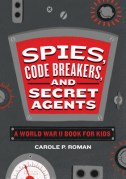
This STEM Tuesday’s theme is on the ecology of polar regions—from animals and plants that find ways to survive in their extreme environment to deep sea creatures and melting polar ice to the scientists that study these frozen parts of the world. From the Arctic to Antarctica, life may be difficult, but it still thrives and clearly reflects our rapidly changing environment. Here are some books and activities you can use in the classroom to help students learn about this unique environment and why it is so important.
Ice: Chilling Stories From a Disappearing World, by Laura Buller, Andrea Mills, and John Woodward
A browsable book that ranges from the prehistoric to present. Meet polar plants, frozen frogs, and other wonders of the icy world. Plenty of climate change alerts sprinkled throughout the pages
Classroom activity: Prehistoric animals (like wooly mammoths, wool rhinos, and cave bears) have all been found preserved for thousands of years in polar ice and on cave walls. Show students ice age cave art paintings (such as those in Chauvet–Pont d’Arc) and ask them to make their own cave art images of prehistoric animals using flat rocks and red or black paint. Students should research the animals and depict them doing an activity. Students can then try guessing which prehistoric animal in each person’s piece of cave art.
Climate Change and the Polar Regions, by Michael Burgan.
An introduction shows how scientists study climate. Following chapters focus on the impacts of climate change to the Arctic and Antarctic, from melting ice to changing ocean currents to wildlife.
Classroom activity: Have students do an experiment to understand the greenhouse effect using two thermometers, a jar with a cover, and sunlight. Place one thermometer inside the jar and seal it. Put the jar and the second thermometer in a sunny spot and have students record their temperatures every ten minutes. Discuss what happened and why the jar affected the temperature. Explain how greenhouse gases act in a similar way to raise Earth’s temperature.

Poles Apart: Why Penguins and Polar Bears Will Never Be Neighbors by Elaine Scott
After exploring the fossil evidence of Pangea, this book offers a look at the unique physical and climactic differences of each pole, the people and animals that reside in each, and the lessons gained from explorers and scientists. It includes a good resource list of books and websites.
Classroom activity: Have students research two other creatures that live at opposite poles and have them create comparison charts listing qualities that make them similar and different. Are they both mammals? Do they both hunt? Do they have thick layers of blubber to keep them warm? Students should find images or create drawings to illustrate their findings and share them with the class.
Further Polar Resources
Here are some websites that students can use to learn more about the polar regions:
- Ice Stories: Dispatches from Polar Scientists
Find out about the varied work scientists are doing in the Arctic and Antarctic.
http://icestories.exploratorium.edu/dispatches/ - PBS Learning Media, Polar Sciences
Media resources show the importance of studying different kinds of polar sciences, including the atmosphere, ice, land, oceans, and people.
https://tpt.pbslearningmedia.org/collection/ipy07-ex/#.X_0yTS2ZOjQ















































